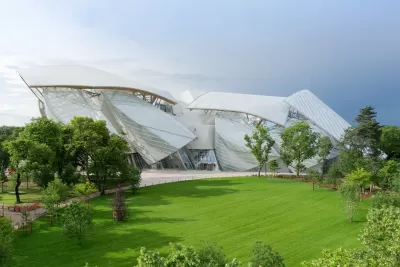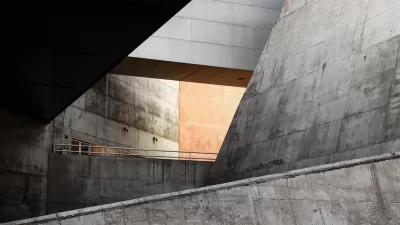Reviewing Douglas Murphy's book "Last Futures: Nature, Technology and the End of Architecture," Jonathan Meades lays into the new utopianism of contemporary architecture. Silicon Valley gets portrayed as both foolish and hypocritical.

Flowery language abounds in Jonathan Meades' review of Douglas Murphy's book Last Futures: Nature, Technology and the End of Architecture. We get a take-down of today's trend toward tech-savvy, Silicon Valley-assisted architecture.
Meades' ideological target is utopianism, specifically the utopian minds that "undertake constant tourism of the unprovable, to enjoy the unsupported conviction that there are big solutions rather than billions of unanswerable questions." In architecture, Meades writes, "it is hardly surprising that the smartest of smart buildings are already being programmed to exercise control over us – caring control, softly spoken – and with a degree of subtlety that quite evaded B.F. Skinner and still evades the uniformed gorillas who patrol gated 'communities' and apartment complexes."
In a critique that could extend to the Silicon Valley ethos as a whole, Meades takes issue with ideologies of liberation via technology—i.e., Buckminster Fuller—that get co-opted by the Googles, Apples, and Amazons, "the most ruthless of modern employers."
Some of architecture's biggest names don't get off lightly. From the review: "Among the other architects on this West Coast gravy train are, predictably, those consummate exterior decorators Frank Gehry and Thomas Heatherwick." Neither does the field of contemporary architecture emerge unscathed: "Gehry and Heatherwick will, as ever, be strenuously plagiarised by their flocks of unimaginative disciples who will, then, be making copies of copies."
FULL STORY: Short Cuts

Alabama: Trump Terminates Settlements for Black Communities Harmed By Raw Sewage
Trump deemed the landmark civil rights agreement “illegal DEI and environmental justice policy.”

Study: Maui’s Plan to Convert Vacation Rentals to Long-Term Housing Could Cause Nearly $1 Billion Economic Loss
The plan would reduce visitor accommodation by 25% resulting in 1,900 jobs lost.

Why Should We Subsidize Public Transportation?
Many public transit agencies face financial stress due to rising costs, declining fare revenue, and declining subsidies. Transit advocates must provide a strong business case for increasing public transit funding.

Paris Bike Boom Leads to Steep Drop in Air Pollution
The French city’s air quality has improved dramatically in the past 20 years, coinciding with a growth in cycling.

Why Housing Costs More to Build in California Than in Texas
Hard costs like labor and materials combined with ‘soft’ costs such as permitting make building in the San Francisco Bay Area almost three times as costly as in Texas cities.

San Diego County Sees a Rise in Urban Coyotes
San Diego County experiences a rise in urban coyotes, as sightings become prevalent throughout its urban neighbourhoods and surrounding areas.
Urban Design for Planners 1: Software Tools
This six-course series explores essential urban design concepts using open source software and equips planners with the tools they need to participate fully in the urban design process.
Planning for Universal Design
Learn the tools for implementing Universal Design in planning regulations.
Smith Gee Studio
Alamo Area Metropolitan Planning Organization
City of Santa Clarita
Institute for Housing and Urban Development Studies (IHS)
City of Grandview
Harvard GSD Executive Education
Toledo-Lucas County Plan Commissions
Salt Lake City
NYU Wagner Graduate School of Public Service




























